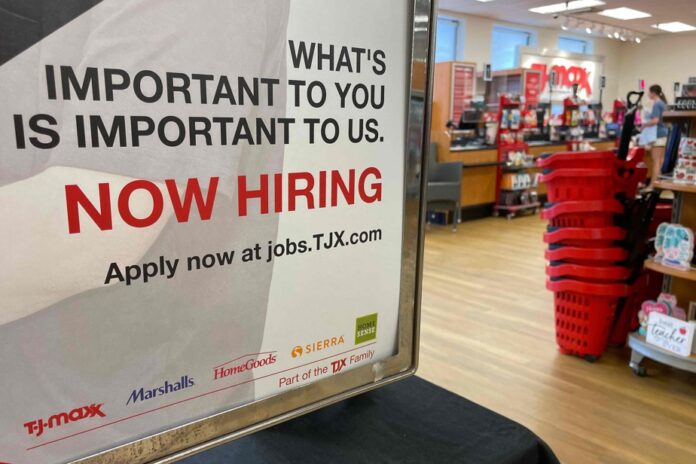(Washington) The job market in the United States unexpectedly rebounded in April, with job creations rising and the unemployment rate falling, far from the expected slowdown in the fight against high inflation.
In April, 253,000 jobs were created, the Labor Department announced on Friday, compared to 165,000 in March – a figure revised down sharply.
Employment remains up in business services, health care, recreation and hospitality, and social assistance, the Labor Department statement details.
As for the unemployment rate, it fell further, and fell to 3.4% (-0.1 point), as in January, its lowest level since 1969. Analysts expected 180,000 job creations and a rate of unemployment at 3.6%, according to several consensuses.
A decline in job creation and a rise in the unemployment rate are however expected to bring inflation under control. This, still very strong, had been fueled, among other things, by the significant growth in wages linked to the lack of manpower.
Wages thus continued to climb in April, but a little more slowly. Average hourly earnings rose 4.4% year-on-year to $33.36, from 4.6% last month.
“The data shows that the labor market remains tight and the economy continues to create jobs at a rapid pace,” said Rubeela Farooqi, chief economist for HFE.
This report “shows both strength and stability. Strength in the number of jobs added and stability in the diversity of where those jobs were added,” commented Robert Frick, Economist for Navy Federal Credit Union.
Job creations in the private sector alone, published on Wednesday, had set the tone, defying the forecasts, with 296,000 jobs created against 142,000 the previous month, according to the monthly ADP / Stanford Lab survey.
The American central bank (Fed) is in the front line to fight against high inflation. It is she who must put an end to the overheating of the economy fueled by years of very low interest rates, which has led to this rise in prices not seen in 40 years.
For this, it has been raising its rates for a year. This leads the banks to, in turn, raise the cost of the loans they offer to households and businesses, to weigh on consumption and investment, and stop the escalation of prices.
The Fed raised them again on Wednesday, after its monetary policy meeting, for the 10th time in a row.
“We’re seeing some evidence of easing labor market conditions,” CEO Jerome Powell said at a press conference at the time, “but overall you have a 50-year low unemployment rate. years “.
“The demand for labor still greatly exceeds the supply of available workers,” he also commented.
At the end of March, there were still nearly 9.6 million job vacancies, according to the Labor Department’s JOLTS survey released Tuesday. It is, of course, in regular decline, but it remains at a very high level.
However, while economic activity is slowing down under the pressure of rate hikes, but also of the recent crisis in the banking sector which is also restricting access to credit for households and businesses, a recession cannot be ruled out, and the unemployment is also expected to rise.
Nancy Vanden Houten, an economist for Oxford Economics, anticipates a slowdown in job growth linked to “a mild recession” ahead, “cumulative rate hikes and tighter lending standards weighing on the economy and the labor market in the second semester”.
The Fed boss, however, still believes that it is possible to escape it. And, if there is a recession, it could be mild, with unemployment rising “smaller than has been typical in modern-era recessions.”















